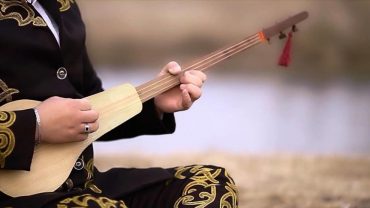Elechek
An integral part of the women’s costume was a headdress made of white fabric, wound around the head and with its majestic appearance somewhat reminiscent of a crown. In Kyrgyzstan, it is called «elechek». Only married women wore it. The national costumes of the northern Kyrgyz are significantly different from those of the south. In the south, the elechek is more massive, because it is hot there and women covered their faces with it. There are up to 20 meters of fabric in elechek. Previously, during the migration, women, when they gave birth, used this material under diapers for newborns. And when a person died, the elechek was unwound on a shroud.
The national costumes of the northern Kyrgyz are significantly different from those of the south.
In the south, the elechek is more massive, because it is hot there and women covered their faces with it. There are up to 20 meters of fabric in elechek. Previously, during the migration, women, when they gave birth, used this material under diapers for newborns. And when a person died, the elechek was unwound on a shroud
That is, it turns out that for the nomadic people, elechek was not just an adornment for women, but also a strategic supply of clean fabric, which, if necessary, was always at hand. Nomads are people who carried their world with them.
Kunduz tebetey
Unmarried girls wore cone-shaped hats, but from about the middle of the 19th century they fell into disuse. They were replaced in the South by a tebeteyka, in the North a girl’s fur hat (tebetey) became widespread.
Its crown was sewn from velvet of bright colors, framed with furs, of which the fur of an otter (kunduz) was the most common. Hence the name of the hat — kunduz tebetey.
Little girls also wore kunduz tebetei. And each headdress had some meaning and was worn only according to age.
The headdress for nomads, in addition to its functional purpose, was considered a kind of indicator of a person’s social status and class affiliation. This symbolic meaning of the headdress can be traced in many genres of folklore. It is shown that traditional hats were worn not only to preserve the warmth of the human body or comfort, but at the same time determined the status and place of a person in society. It is noted that the methods of making hats, their types, preferred colors, and ways of wearing them were distinctive signs from other peoples or, on the contrary, emphasized the closeness of ethno-cultural and ethno-genetic ties between these or other peoples








Comment (0)